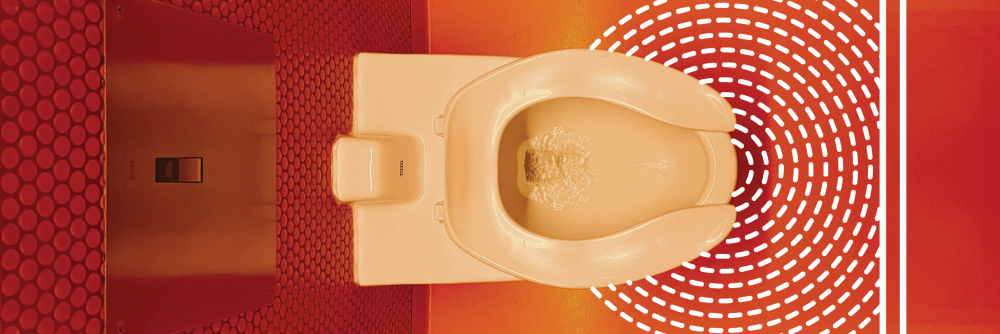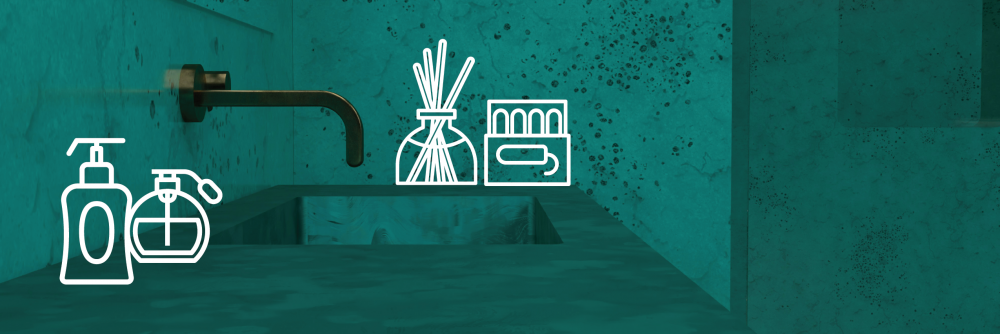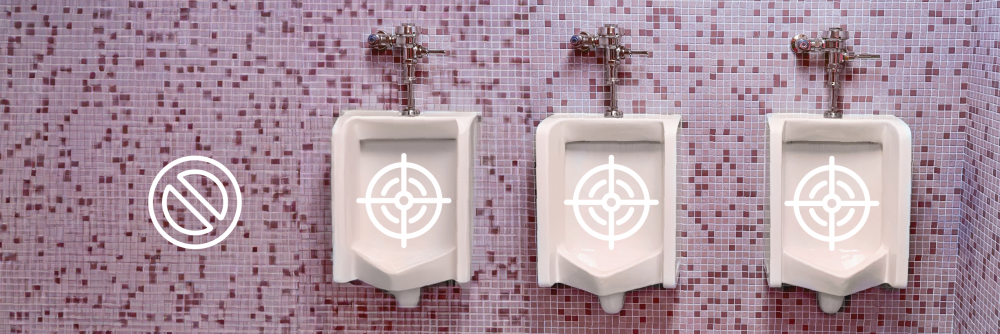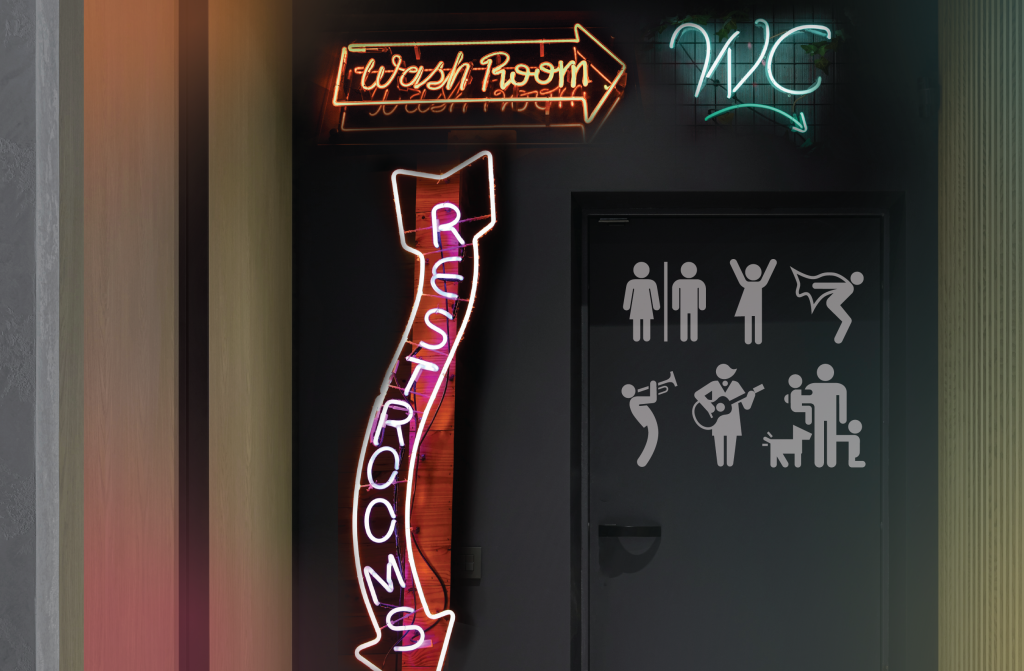[ad_1]
PLASTARC‘s Melissa Marsh brings some important insight about workplace restrooms in this article for the WDM Café and Restroom Feature: Workplace Edition.
We’ve spoken a lot about workspace design, both in this publication and elsewhere, and how the most successful offices start by centering the needs of a diverse and dynamic workforce. Space types, workstyles and multisensory considerations receive so much (deserved) attention, but all too often, there’s one essential workplace component that’s either intentionally or accidentally neglected. Either because it’s easily dismissed as a place where folks handle their most primal needs or just plain crass, the restroom doesn’t seem to garner much enthusiastic attention in the world of human-centered design.
After all, it’s not as if any work gets done in the restroom, right? So why should we care?
The reason, conveniently, is already in the name – a well-designed restroom can offer a place for moments of personal respite and restoration. In order to make their central offices just as appealing as the cozy, personalized home offices that workers are still reluctant to leave behind, organizations have to leave no stone unturned as they make sure every space is optimized for personal wellness. Applying the frameworks of human-centered design to restrooms, then, becomes a clear imperative.
If the most effective workplace is marked by its consideration for workers’ needs and preferences, then the design of the bathroom must not go unconsidered. The UN’s World Toilet Day, which takes place November 19th, opens us up to this difficult topic by reminding us that every human being is entitled to easy toilet access. As office workers, we’re certainly fortunate to have readily available toilets, but that doesn’t mean there isn’t room for improvement. To identify those opportunities, we’ll have to talk about what restroom design does now, and what future versions could do differently.
The good news is that it doesn’t take all that much effort to upgrade from old models, seeing as restroom designs of yesteryear communicated little-to-no concern for user experience. Some classic design staples evoke unwelcome memories of high school, and can still ring true today in certain contexts: fluorescent lighting that’s so bright it almost demands sunglasses, flimsy paper towels that tear even as you delicately try to pull them out of the dispenser, lidless toilets that compel us to flee as soon as we pull the handle, and viscous pink soap that appears to shimmer like gasoline.

And while some modern restrooms have evolved away from these particular trappings, it doesn’t always mean they’re delivering on their full potential. Many office restrooms still lack basic features such as proper ventilation, air freshener, or acoustic and visual privacy. Consider, for instance, how desensitized we are to individual stalls that allow random bystanders to hear and see what’s going on inside – is it really so essential that we see our coworkers’ shoes and hear their every move as they’re perched on the can?
Surely, there must be some other way to communicate that a stall is already in use. And would it be so hard or inconvenient to provide essential toiletries like mouth freshener, deodorant, and feminine hygiene products, so that workers can exit the restroom feeling revitalized? Even some of the more modern restroom solutions seem to cause more trouble than they’re worth: some “touchless” sensors seem to be in a deep slumber as we desperately wave our hands mere inches away, while newer toilets and blow dryers sometimes create hurricane-like conditions with their forceful gusts.
In a previous article for Work Design that was published at the height of the Covid-19 pandemic, we explained how WeWork, whose business model relies on people choosing (and paying) to work there, has inspired a new standard in restroom design. This remains true to this day, as other companies are still working to catch up. In many ways, WeWork accomplished this by simply acknowledging and addressing the issues that make restroom visits one of the least exciting parts of the workday.
First and foremost, two simple solutions – floor-to-ceiling partitions between stalls and speaker systems playing pleasant music – offered people a sense of privacy that previously seemed impossible while attending to their personal affairs. And by switching from black tile and white grout to white tile and black grout on the floors, WeWork created more comforting surroundings: the white tiles are easier to clean, and the black grout successfully hides any detritus that might end up getting caught in the cracks.

But WeWork didn’t just solve seemingly universal problems; it also went above and beyond by embracing the room’s “rest” moniker in its designs. A few simple but carefully considered solutions helped their coworking clients feel refreshed whenever they finished their time in the loo:
- A few simple touches, like wifi access, bag hooks, phone rests, free mouthwash, and lint rollers, make it clear that people’s most essential needs are considered in the design.
- Restrooms feature spaces where users can comfortably tend to their appearance, thanks to floor-to-ceiling mirrors, ample room next to the sink, and counter space where people can place their toiletries.
- Visible signs explain who to contact in case anything in the restroom is missing, dirty, or broken.
- Brightly painted or idiosyncratically decorated walls (think wallpapers) express a degree of homeyness that helps workers feel even more comfortable.
Of course, rest is always most rewarding after some amount of physical exertion, which we so rarely get during the average office workday. A few improvements to restroom design, though, can help to encourage more exercise amongst in-person workers, thereby improving overall performance. Showers, for instance, would enable people to commute to the office via bicycle without having to worry about offending their colleagues’ olfactory sensibilities. A quick hop in the shower and a change of clothes would be all they’d need to get a little morning workout in on their way to work. We’ve already normalized intaking calories with coworkers in the context of team lunches, coffees, and snacks – why don’t we do the same for burning calories by making exercise another everyday work routine?

For those employees who aren’t able to bike to work, the placement of restrooms in the office can be designed to encourage more physical activity. Instead of trying to evenly distribute restrooms across the floor plan and save precious steps for workers, it’s better to place a few restrooms in a central location to help folks get in their daily steps. Not only will this help workers stay active through the day; it will also give them a chance to interact with people from separate departments they might otherwise never see. Offices designed to maximize physical activity and serendipitous encounters have been shown to increase workplace morale and individual creativity. But don’t take it from us – take it from iconic thought leaders like Steve Jobs, who meticulously designed Pixar’s offices specifically with restrooms in mind.
It’s time we embrace the fact that every design element, including the layout and placement of restrooms, can go a long way towards cultivating a workplace culture of delight, spontaneity and creativity.
In many ways, it’s the least glamorous parts of the workday – the moments when we can step away from our obligations and center ourselves – that enable us to excel. Remote workers already have ample opportunity to do this when they work from home, so it’s urgent that office designs take advantage of every chance to consider and anticipate the needs of in-person workers. A little bit of rest goes a long way.
[ad_2]
Source link

